Stephen was at Madrid’s Barajas airport and was all ready and waiting with the minibus parked closely for a quick getaway when the group arrived from London. Travelling through the city and out onto the main road to Badajoz was really quiet…once we cleared Madrid!
Birds were seen right from the start with Common Magpies, Wood Pigeon, Spotless and European Starlings, Southern Grey Shrike, Black Vulture, Red Kite, Common Buzzard, Common Kestrel, Corn Bunting, Common Stonechat, Green Sandpiper, Little Grebe all en route. We stopped off for tapas at a roadside restaurant and travelled the last leg to our hotel near Trujilo with ease. Arriving at the road end we saw a lovely Southern Grey Shrike. Soon we were relaxing with a welcome drink from our hosts and later enjoying a lovely meal.
Day 2 – Thursday 22nd November 2012.
November daylight is later in coming in Extremadura and it was just getting light at 8am when we took breakfast. Leaving around 9am we set off for Monfrague National park and were soon watching the fantastic spectacle of Griffon and Black vultures wheeling around the top of Peña Falcon. Peregrine Falcon was seen and Blue Rock Thrush basked in the early sunshine. Black Redstart, Crag Martin, Greenfinches, Great and Blue Tits all came past the observation point as Great Cormorants fed on the River Tajo.
It was mainly sunny and there wasn’t too much low cloud to the north. Temperatures were going to be around 15oC so we decided to drive further into the park following the river and winding road that leads to the Tietar valley.
There were many Red Deer in the park feeding fairly close to the road and Red-legged Partridges were seen as well as heard opposite the Portal de Tietar observation point.
As we were watching the vultures and admiring a perched male Peregrine, a beautiful adult Spanish Imperial Eagle came into view then disappeared behind the cliff line and forest. After a little while the bird was seen again soaring on a thermal, and coming close enough for all to have great views. A distant second bird was also seen off to the west.
A single Great Spotted Woodpecker flew past and a long line of distant Common Cranes could also be seen and Long-tailed Tit, Sardinian Warbler, Wren and Rock Dove were also watched.
Attracted by the sound of Common Cranes we took a loop around the lower agricultural flatlands towards Placencia finding a good number of Common Buzzard and Red Kite. Woodlarks, White Wagtails and Meadow Pipits seemed to be very common and Jackdaw, Northern Lapwing, Crested Lark, Skylark, Common Stonechat, Blackbird, Song Thrush, Mistle Thrush and Hoopoe were all found.
Stopping for our picnic lunch we had a fleeting view of a hunting Sparrowhawk and Brook found a great example of the fawn colored Praying Mantis.
Our remainder of the afternoon was spent stopping off at various sites to watch Griffon and Black Vultures cross the dehesaand we eventually stopped down below Jaraicejo at the three bridges on the Rio Almonte. Here we found some Cirl Bunting, Grey Wagtail, Dartford Warbler, Little Egret, Green Sandpiper.
After driving quite a distance during the course of the day we drove back to the hotel and took a walk along the country lane. There were some of the usual garden birds that we see around the hotel gardens and some farmland birds with lots of Azure-winged Magpies being seen.
Brook also found a large adult Praying Mantis at the side of a dry stone wall.
We took dinner at the hotel and later retired for the night.
Day 3 – Friday 23rdNovember 2012.
After breakfast we headed south stopping on the Camp Lugar road. Our first good bird of the day was a Redwing perched on top of a tree. Lots of Great Grey Shrikes were around and plenty of Hoopoes too. As we came close to the entrance to the Sierra Brava reservoir, Nicola and Sylvia spotted a male Merlin by the roadside. Two Little Owls were seen on top of a rock pile and our first group of Great Bustards were watched. Calandra Larks sang and rose in the air across the steppe, Zitting Cisticola buzzed around and Skylarks were seen and heard as were a couple of small flocks of Short-toed Larks. Woodlarks and Crested Larks added to the lark tally and hundreds of Lapwings and Meadow Pipits fed through the close grazed landscape. A Griffon Vulture sat in a tall Eucalyptus tree and a small flock of Little Bustards were watched feeding at the top of a ridge in course grass and dried thistles – a perfect screen for a perfectly camouflaged bird!
After the Guardia Civil told us we were not allowed to stop at the side of the road, even although there was no continuous white line painted along the side, we pulled into a gateway and allowed them to go and harass other tourists. We had a quick look further along the road picking up a few raptors that included Common Kestrel, Common Buzzard, Marsh Harrier and Red Kite. On the way back we spotted huge flock of over 70 Little Bustards. Ignoring the chance of another encounter with the ‘boys in green’ we stopped for a little while to watch them.
Continuing down to Madrigalejo we passed more Marsh Harriers and turned off road to watch the cranes feeding in the rice field. A beautiful Black-winged Kite was seen on the edge of an old cork oak and conveniently flew onto a post at the side of the road. We inched forward and everyone had a great view of this quite rare bird in Extremadura. Numbers of Black-winged Kites have gone down slowly in Extremadura whereas in other southern and northern areas numbers have actually increased. France now has over 60 breeding pairs and just shows what a nomad this lovely raptor really is.
We saw literally thousands of Common Cranes in the harvested rice fields and a small flock of Greylag Geese that were feeding with one distant group. Snipe, Spanish Sparrow, Red Avadavat and Penduline Tit made for an impressive tally at this area.
Our next exploration was amongst the tracks of the agricultural lands to the south. Here we saw many more Cranes and medium to large flocks of Black-bellied Sandgrouse took off and landed to feed.
We took our lunch stop over a reed bed on the local river and found White Stork, Corn Bunting, Southern Grey Shrike, Little Grebe, Moorhen, Common Waxbills and Cetti’s Warbler.
Day 4 – Saturday 24th November 2012.
It was a grey day but dry as we set off to look for Great Bustards after breakfast.
There was no rain but you could feel there was a change in the weather coming and as we took a look at Belen plain, there was a lot of activity in the countryside with hunters around and the sound of distant gunshots being heard. Belen was quiet not surprisingly as Saturday is a big hunting day here in Spain and disturbance is inevitable at this time of year. We did have our sprits raised when a flock of over 300 Calandra Larks were watched feeding on a freshly ploughed field. The usual raptors were already patrolling the skies and Hoopoes, Short-toed Larks and some large mixed flocks of sparrows and finches swirled past. Green Sandpipers fed on some pools and lots of Southern Grey Shrikes sat on wires.
Taking a trip out to the Caceres plains was similar with little birdlife in the countryside. Everything seemed very quiet as we passed lots of parked vehicles with dog trailers on private land. A look along the Santa Marta de Magasca tracks was also quiet apart from Ravens, Red Kites, finches, larks and one distant Golden Eagle. There were some flocks of Griffon and Black Vultures wheeling around some distant points but all in all it was a bit disappointing to see men out hard coursing with lurchers though fields where normally Great Bustards fed.
One passing hunter stopped his vehicle as we were having lunch and kindly handed us a couple of Great Bustard wing feathers. In general the hunters know which birds are protected and I believe that this was a kind gesture.
We took a walk up one of the tracks after lunch to see if we could get closer to a large flock of Pin-tailed Sandgrouse that had been seen lifting off the ground and wheeling around a hilltop, calling as they flew. On the way we saw an Iberian Hare that was obviously avoiding the men with dogs! We also came across quite a large Ladder Snake against a dry stone wall. It was over 1m in length and quickly found a hole to disappears into.
As luck would have it a few feeding sandgrouse were seen through the scope by Brook and the flock had another fly around in front of us. It was a lovely spectacle with around 80 birds in the sky.
We took a drive past some country lanes and reached the hotel earlier than normal as a wine tasting had been organized for our group before dinner. It was a selection of three different wines we tried from different Spanish regions and all were quite different and very good quality.
After dinner we chatted in front of the log fire in the sitting room over a drink.
Day 5 – Sunday 25th November 2012.
A Wren was calling at the hotel gardens and flitted past the laden orange trees as we walked to the mini bus from the hotel. A few Blackcaps, Blue and Great Tits performed and a male Sardinian Warbler scolded us off the premises!
We took a drive south after breakfast and visited the tracks leading around the north side of the Sierra Bravo reservoir. A huge number of duck were visible from the roadsides on this huge water collector that feeds the Vegas Altas rice fields and other flat agricultural plain below.
Teal, Mallard, Northern Shoveler, Pintail, Widgeon, Gadwall and some Tufted Duck were all present and a single Greylag and a group of 12 Egyptian Geese were also watched. A pair of Red Crested Pochard were also picked out of the thousands of duck as were two Black-necked Grebe. Great Crested Grebe were visible in good numbers and a few Coot were seen. The noise of feeding cranes below on the rice fields was incredible and everywhere you looked in the sky you could see lines of cranes coming and going with a quick count that went well over two thousand. Some Great and Little Egrets were seen in flight or around the edges of the water.
Checking the dam wall and nearby pools below the reservoir we could see Green and Common Sandpiper and a single Greenshank was seen in flight. A few Kingfishers and a group of five Hoopoes lined up in a row were lovely to see and quite a few Marsh Harriers and Common Buzzards were seen hunting or perched around the area.
Driving down through the rice-fields we got a bit closer to the Common Cranes. A few hundred Cattle Egrets were following a lone tractor that was turning over the wet mud after the harvest and there were pockets of White Storks feeding there too.
Travelling along the edge of the holm oak dehesa we watched many cranes feeing on the acorns under the canopy of the trees which made a very pretty sight. The adjacent farmland had quite a few passerines feeding there that also included Reed Bunting which was a new species for the tour.
We drove on along the Campo Lugar roadway across the steppe and found some Little Owls, Calandra Lark and Common Buzzards and Kestrel. The hunters were out again, this being Sunday and the usual Great Bustards site was empty. Little Bustards too were nowhere to be seen as men roamed the countryside with dogs hunting hare. Stopping off for lunch at the side of the road overlooking a sweep of the lower steppe land we picked up a single female Hen Harrier and some very distant Great Bustards. Looking at the map for some road or track references to get closer, we drove the long way towards them and came through an olive grove literally dripping with ripe olives where Black Redstarts danced and flicked between the fallen fruits.
Looking out across the open landscape we found the Great Bustard flock, almost ninety in total. Another flock, this time a group of around forty Little Bustards took off from an area close by and wheeled across the sky before landing again just out of sight. The flock of Great Bustards then took off and flew around before coming back to the same spot but a good number had obviously landed over the other side of the olive grove. We then took a drive around to open ground to look for the remaining birds and stopping off on a quiet country road we found them on a sloping stubble field actually walking towards us. This was the closest views we could have hoped for and the birds seemed quite settled. After spotting the female Hen Harrier hunting once more we drove along the road looking at the crumbling dry stone walls and checking the fields when our attention was drawn to two large raptors on the due of a field with winter wheat. The birds turned out to be a pair of Bonelli’s Eagles. The birds flew off but landed on a hillside on a dead tree and we were able to set up our telescopes and get some great views of these magnificent rare raptors.
We ended the day happily avoiding any forecasted rain showers but by five pm the sky was quite dark and a quick look at the fingers of a mountain woodland proved to be very quiet.
Dinner back of the hotel was most enjoyable and most of us retired fairly early.
Day 6 – Monday 26th November 2012.
Cooler winds were wheeling in from the north-west and the sky looked threatening when we left after breakfast for Almaraz. By the time we got there it was quite windy and there wasn’t much visible along the reed beds. A few Purple Swamphen flew over the reeds and one obligingly stayed out for a while before skulking back out of sight. A Kingfisher darted across the water and a few Penduline Tits called. One distant Black-winged Kite was seen and there were good numbers of wintering Marsh Harriers and Grey Herons.
After a quick coffee to warm up we drove out past Casatejada and Serrejon and around Estacin de La Bagazona to get into the Monfrague National Park at the Tietar Reservoir. Before arriving at Monfrague we had a walk through a wooded dehesa and found Nuthatch and Short-toed Treecreeper. Good numbers of Meadow Pipits and Woodlarks were seen. There were some Mistle and Song Thrushes too with a sprinkling of Crested Larks and Blackbirds.
The massive granite cliff face at the Puerto del Tietar was particularly impressive on our second visit there with hundreds of Griffon and Black Vultures in the air wheeling around and lifting higher and higher on the air currents. It wasn’t long before we saw an adult Spanish Imperial Eagle and this time it came in really close and flew past the rock face. A second bird was also spotted in the vulture flock. A Dashing Pergrine Falcon came past then soared above our heads for a while before flying out of view.
Firecrest were seen by James through the nearby treeline and Long-tailed Tits trooped through the lower scrub and smaller trees below the lookout point.
Some time after lunch and of course the magnificent raptor views overlooking the Puerto de Tietar we made our way back towards Trujillo stopping off to buy some Jamon Iberico, locally cured hams and cheeses.
Back at the hotel we wrote up our birding list and had another fine dinner from Belen and Juan Pedro.
Day 7 – Tuesday 27th November 2012.
We awoke to a frost covered ground and clear bright blue skies. After breakfast we drove out along the road to Monroy and Santa Marta de Magasca. Red Kites seemed to be up early and a Little Owl was seen perched on a large rock. Southern Grey Shrikes and Azure-winged Magpies fed on the steppe and nearby oaks of the neighboring dehesa. There were some Ravens calling and we could also hear the sound of cranes, their haunting voices carrying across the landscape. A little further on we turned off onto a drovers road and Brook quickly spotted a group of Great Bustards feeding amongst verdant meadow of fresh grasses and wild mustard. The birds didn’t seem to bothered about our presence and fed for a while before moving off to the tree-line. A few Black Redstarts, Mistle Thrushes and various larks were seen as we checked out a few other sites for more wildlife. A Clouded Yellow butterfly, Small White and a Painted Lady butterfly were seen.
On the other side of the village of Santa Marta de Magasca a single Spanish Imperial Eagle passed overhead and a little further on we watched two adult Bonelli’s Eagles fly down the river valley over the wooded dehesa.
We took lunch in the shelter from the cooler north wind then later drove out towards Caceres where we found one Great Bustard in flight that landed beside a small group of seven close to a farmhouse. Lesser Black-backed Gulls and Black-headed Gulls fed in the same fields and one of the Black-headed was still in summer plumage.
After the bustard show, we took a drive south to see if we could catch up with the Stone Curlews that had eluded us at the start of the tour down near Madrgalejo. On our arrival at the old silos and railway we found a flock of over 50 birds that were put up by a young Marsh Harrier that was quartering the nearby dehesa. What was really surprising was finding an adult Woodchat Shrike so late in the season! These birds usually have all left Europe by early October and here, very close to the month of December was an apparently healthy adult bird feeding on a freshly caught young Iberian Wall Lizard.
We took a quick look at the Common Cranes, which were nearby and beautifully framed throughout the wooded meadows then quickly checked the Campo Lugar road to see if we could find Little Bustard to add to the day’s tally. As luck would have it we all scanned the rising grasslands when James saw four birds feeding in the grass in the near distance.
We travelled back to the hotel and dropped off our bags and scopes then drove the short distance to Trujillo’s medieval centre to have a walk through the narrow winding streets to the ancient castle on top of this famous historical town. From the top we had lovely sunset views across the rolling landscape and were able to see many of the landmarks of the birding sites we had already visited. We walked back down to the main square, found a bar and went indoors for a drink and some local olives. What a lovely way to finish off our last full day!
As usual the hotel dinner was delicious and we even had a piano recital from Marina, Juan Pedro and Belen’s daughter.
Day 8 – Wednesday 28th November 2012.
After breakfast we packed and prepared for departure in the minibus. Saying farewells to Viña Las Torre we set off to Madrid. We made good time stopping only for a coffee and churos stop and filling up with fuel just inside Madrid city limits. There were lots of Red Kites en route and a few Black Vultures. One Black-winged Kite was seen hunting close to the motorways as well.
After returning the minibus to the car hire firm we checked in and cleared security then had lunch. We then went our own ways with Stephen heading off to get his fight to Jerez and the group heading for terminal 4S for London.
It was a great tour and we saw all the key birds plus some lovely surprises. Thanks to all who participated for you warmth and appreciation and I hope to see some of you in the future on another birding and wildlife tour.
Warmest best wishes, Stephen Daly, 2012
ANNOTATED LIST OF BIRDS RECORDED
(A total of 120 species recorded by the group)
Red-legged Partridge Alectoris rufa Seen in low numbers or heard most days
Greylag Goose Anser anser 11 birds seen in the Vegas Altas area feeding with Common Cranes and a few birds seen in flight over the Embalse de Sierra Brava on the 25th
Egyptian Goose Alopochen aegyptiaca A flock of 12 on the Sierra Brava on the 25th
Gadwall Anas strepera Moderate numbers on the Embalse de Sierra Brava on the 25th
Wigeon Anas penelope Moderate numbers on the Embalse de Sierra Brava on the 25th
Mallard Anas platyrhynchos Large numbers on the Embalse de Sierra Brava on the 25th and small numbers recorded elsewhere on wetland areas.
Shoveler Anas clypeata Large numbers on the Embalse de Sierra Brava on the 25th
Pintail Anas acuta Around 60 birds on the Sierra Brava on the 25th
Teal Anas crecca Forty or so birds seen on the Embalse de Sierra Brava on the 25th
Red Crested Pochard Netta rufina A single pair on the Sierra Brava on the 25th
Pochard Aythya ferinaSeen on four days at various sites
Tufted Duck Aythya fuligula Low numbers recorded on the Sierra Brava on the 25th.
Little Grebe Tachybaptus ruficollis Four birds on the Embalse de Arrocampo on the 16th.
Black-necked Grebe Podiceps nigricollis A pair seen amongst the raft of ducks at the Sierra Bava on the 25th
Great Crested Grebe Podiceps cristatus Large numbers on the Embalse de Sierra Brava on the 25th and a single bird at the Portal del Tietar on the 27th
White Stork Ciconia ciconia Fairly common and seen most days with greater concentrations through the Vegas Altas area
Cattle Egret Bubulcus ibis Large numbers at Vegas Altas feeding behind a ploughing tractor on the 25th and on a few other days in various locations
Grey Heron Ardea cinerea Small numbers recorded daily with most around the agricultural areas
Great Egret Ardea alba Seen most days in ones and two’s
Little Egret Egretta garzetta Seen most days in small numbers
Cormorant Phalococorax carbo Common and seen daily with concentrations on the Monfrague & Sierra Brava reservoirs and at Almaraz
Common Kestrel Falco tinnunculus Fairly common throughout the week
Merlin Falco columbarius One males seen perched on a post at Campo Lugar on the 23rdand another adult female seen on the Santa Marta de Magasca road on the 24th
Peregrine Falco peregrinus One pair seen at Peña Falcon and a single male seen soaring over the Portal del Tietar on the 26th.
Black-winged Kite Elanus caeruleus Great views of a single bird at Vegas Altas on the 23rd, distant bird seen at Almaras on the 26th and one bird seen on our journey back to Barajas on the 28th
Red Kite Milvus Milvus Seen every day of the tour, common
Eurasian Griffon Gyps fulvus Common, seen in good numbers everyday of the week with exceptional sightings at Peñafalcon and Portal del Tietar in the Parque Nacional de Monfragüe.
Black Vulture Aegypius monachus Low numbers, seen every day of the tour
Marsh Harrier Circus aeruginosus 15+ birds seen at Vegas Altas on the 23rd, a few birds seen on the 24that various locations, 12+ birds on the 25th at Vegas Altas and on the 26th another 12+ at Almaraz
Hen Harrier Circus cyaneus A lovely male seen on the 21st en route to Trujillo and one adult female seen on the 25th near Campo Lugar
Sparrowhawk Accipiter nisus A single bird seen on the 22ndat Monfrague, another single seen on the 23rd near Rio Gargaligas
Common Buzzard Buteo buteo Fairly common, recorded in small numbers each day of the tour.
Spanish Imperial Eagle Aquila adalberti Two adult birds seen at the Portal del Tietar on the 22nd, another 2 adult birds seen at the same site on the 26th. A single bird seen on the 27th near Santa Marta de Magasca
Golden Eagle Aquila chrysaetos A single bird seen on the 24th towards the Caceres plains
Bonelli’s Eagle Aquila fasciata A juvenile bird seen on the 22nd at Monfrague. Two adults seen near Campo Lugar on the 25th and two adults seen on the 27th near the village of Santa Marta de Magasca
Great Bustard Otis tarda Twelve birds seen on the 23rdnear Santa Marta de Magasca, 86 birds seen on the 24th at two sites in the same area and on the 27th one group of 17 birds seen on the Caceres plains with a smaller group of 9 birds seen a little further on
Little Bustard Tetrax tetrax Flock of 80 birds seen on the 23rd at Campo Lugar, 42 birds seen on the 25thnear Alcollarin and 4 birds seen on the 27th again at Campo Lugar
Water Rail Rallus aquaticus One heard at Almaraz lagoons on the 26th
Purple Swamphen Porphyrio porphyrio Three birds seen at Almaraz lagoons on the 26th
Moorhen Gallinula chloropus One bird seen at Madrigalejo on the 23rd, and 3 birds seen on the 25th at Vegas Altas
Water Rail Rallus aquaticus One bird heard calling at Arroyo Campo/Almaraz
Coot Fulica atra Good numbers seen on the 25that the Embalse de Sierra Brava and again on the 26th at Almaraz
Common Crane Grus grus Seen every day of the tour. Thousands of birds seen within the Vegas Altas agricultural area. Good numbers of medium sized flocks in various Dehesas throughout the area. Extremadura has concentrations of Common Crane exceeding 140,000 birds in Winter.
Stone Curlew Burhinus oedicnemus A flock of 50+ wintering birds were seen near Madrigalejo on the 27th
Lapwing Vanellus vanellus Seen every day of the tour
Common Snipe Gallinago gallinago One bird seen on the 23rd at Vegas Altas
Greenshank Tringa nebularia One bird seen at Sierra Brava on the 25th
Green Sandpiper Tringa ochropus Seen in small numbers most days of the tour
Common Sandpiper Actitis hypoleucos One bird seen on the 25th at Sierra Brava
Yellow-legged Gull Larus michaellisSeveral birds seen at Vegas Altas on the 23rd and a single bird on the 25th at the Embalse de Sierra Brava
Lesser Black-backed Gull Larus fuscus Seen in low numbers on five days of the tour
Black-headed Gull Chroicocephalus ridibundus Good numbers feeding in the agricultural areas, seen on 5 days of the tour
Pin-tailed Sandgrouse Pterocles alchata A flock of 80+ birds seen at Santa Marta de Magasca on the 24th
Black-bellied Sandgrouse Pterocles orientalis A flock of 85 birds seen on the 23rd at Vegas Altas. A few birds were heard calling at the Belen Plain on the 24th
Rock Dove/Feral Dove Columba livia Recorded every day of the tour. There were some pure Rock Dove forms seen at Portal de Tietar on the 22ndand the 26th
Woodpigeon Columba palumbus Seen every day of the tour, common.
Collared Dove Streptopelia decaocto Recorded in smallish numbers throughout the week.
Little Owl Athene noctua Two birds seen on the Campo Lugar road on the 23rdand again on the 25th. One seen on the 27th at Madrigalejo
Kingfisher Alcedo atthis Ones a two’s recorded on most days in river valleys and reservoirs.
Hoopoe Upupa epops Fairly common throughout the week with 20 or so recorded on two separate days.
Great Spotted Woodpecker Dendrocopus major Seen on four days, in typical woodland habitat.
Iberian Grey Shrike Lanius meridionalis Fairly common on the steppes and on telegraph wires alongside roads.
Woodchat Shrike Lanius senator A single adult was watched for some time near Madrigalejo. Normally these birds have migrated through Spain and Portugal and are in Central Africa by now but this bird was happily feeding on a young Iberian Wall Lizard and the bird certainly looked in good shape. (Which is more than can be said about the wee lizard!)
Jay Garrulus glandarius Singles and pairs seen in the appropriate woodland areas throughout the tour
Azure-winged Magpie Cyanopica cyanus Very common and vocal with flocks seen daily. Good numbers around our hotel.
Magpie Pica pica A very common species throughout the week.
Jackdaw Corvus monedula Fairly common throughout the week with a resident flock of at least 20 birds at Las Canteras and bigger flocks in the square in the old square in Trujillo.
Carrion Crow Corvus corone Seen on both the 23rdand again on the 24th at Vegas Altas and Belen Plain respectively.
Raven Corvus corax Recorded in small numbers throughout the week.
Great Tit Parus major Fairly common during the week but only seen in ones and two’s.
Blue Tit Cyanistes caeruleus Small numbers seen most days and one seen most days in the hotel garden.
Great Tit Parus Major Seen most days of the tour.
Penduline Tit Remiz pendulinus Four birds heard then seen flying at Vegas Altas on the 23rd and again heard at Almaraz on the 26th.
Long-tailed Tit Aegithalos caudatus Five at the Rio Almonte on the 13th and ten at the Portal del Tietar in Monfragüe.
Crag Martin Ptyonoprogne rupestris Seen in low numbers on five days. Larger concentrations at Peña Falcon and Portal del Tietar in Monfrague Parque Nacional.
House Martin Delichon urbicum Two birds seen near Santa Marta de Magasca on the 24th
Calandra Lark Melanocorypha calandra Quite numerous in selected meadows on the Magasca, Zorita and a large flock of over 300 on the Belen Plain on the 25th.
Short-toed Lark Calandrella brachydactyla 8 birds seen on the 23rdat Vegas Altas and a few seen on the 24th calling and flying over Belen plain.
Crested Lark Galerida cristata Very common throughout the week.
Thekla Lark Galerida theklae Two birds seen to compare with Crested Lark on the Belen Plain on the 25th.
Skylark Alauda arvensis a few seen on the 22nd en route to Monnfrague from Placencia. On the 24th 6 were seen at Belen and on the 25th a few were seen and heard at Vegas Altas
Zitting Cisticola Cisticola juncidis Seen well on four days at Campo Lugar, Vegas Altas and other sites.
Cetti’s Warbler Cettia cetti One seen and others heard at the Rio Gargalligas on the 23rd and subsequently heard calling at Almaraz/Arrocampo on the 26th and some other wetland areas.
Chiffchaff Phylloscopuus collybita Common throughout the week.
Blackcap Sylvia atricapilla Common seen and heard most days. Present in the hotel gardens.
Dartford Warbler Sylvia undata Two birds seen very briefly and also heard near Jaraicejo on the 22nd.
Sardinian Warbler Sylvia melanocephala Skulking birds seen most days and heard as well. A fairly common warbler in Extremadura.
Firecrest Regulus ignicapilla A few seen and heard calling on the 26that woodland near the Portal del Tietar
Wren Troglodytes troglodytes A few birds seen and others heard in various locations. Present and calling from the hotel gardens
Short-toed Treecreeper Certhia brachydactyla A couple of birds seen at woodland in the dehesa when we took a walk on the 26thnear Serrejón
Nuthatch Sitta europea One seen as above on the 26th
Starling Sturnus vulgaris Large flocks from the north seen every day in the company of Spotless Starlings
Spotless Starling Sturnus unicolor Very common throughout the week.
Blackbird Turdus merula Fairly common throughout the week.
Redwing Turdus Ilacus One bird seen near Zortia on the 23rd
Song Thrush Turdus philomelos Fairly common and seen in low numbers most days
Mistle Thrush Turdus viscivorus Seen in wooded dehesas and meadows on five days
Robin Erithacus rubecula Recorded fairly regularly throughout the week.
Bluethroat Luscinia svecica One wintering birds seen on the 23rd at the rice fields of Vegas Altas.
Black Redstart Phoenicurus ochruros Common around buildings and rocky areas. Great views of a male feeding in an Olive grove on the 25th
European Stonechat Saxicola rubicola Fairly common, recorded throughout the week.
Blue Rock Thrush Monticola solitarius Seen on the 23rd and again on the 26th at Monfragüe at Peñafalcon and Portel del Tietar.
House Sparrow Passer domesticus Common, recorded daily.
Spanish Sparrow Passer hispaniolensis A flock of at least 200 around Vegas Altas on the 14th with smaller numbers recorded at various other locations.
Tree Sparrow Passer montanus A couple of birds seen on the 23rd at the Río Gargalligas and again on the 24that La Cumbres
Common Waxbill Estrilida astrild 20 seen on the 24th at Vegas Altas.
Red Avadavat Amandava amandava Seen on two occasions at Río Gargalligas on the 23rds and again on the 25th at the lower dam wall at Sierra Brava
Grey Wagtail Moticilla cinerea Recorded in ones and twos each day along streams, at reservoirs and on flooded rice fields.
White Wagtail Motacilla alba Encountered regularly in quite good numbers.
Meadow Pipit Anthus pratensis Very common on the steppes and on agricultural fields.
Chaffinch Fringilla coelebs Common, recorded in good numbers each day.
Serin Serinus serinus Recorded on four separate days in smallish numbers.
Greenfinch Carduelis chloris Recorded on four separate days in smallish numbers.
Siskin Cardelus spinus A flock of 40 birds seen on the 23rdnear Cabañas del Castillo and a couple of other times in smaller numbers during the week.
Goldfinch Carduelis carduelis Common, recorded in good numbers throughout the week.
Linnet Carduelis cannabina Reasonably common, recorded in smallish numbers on four separate days.
Hawfinch Ccocothraustes ccochothraustes Four seen briefly in flight near to Modronera on the 16th.
Corn Bunting Emberiza calandra Very common on the steppe and surrounding open areas.
Cirl Bunting Emberiza cirlus Heard on the 22ndat Peña Falcon and six birds seen on the 26th at the Castillo de Monfrague.
Reed Bunting Emberiza schoeniclus One seen on the 23rd near Madrigalejo.
MAMMALS
Red Fox Vulpes vulpes
Red Deer Cervus elaphus
Rabbit Oryctolagus cuniculus
Iberian Hare Lepus granatensis
REPTILES/AMPHIBIANS
Marsh FrogPelophylax ridibundus
Moorish GeckoTarentola mauritanica
Ladder SnakeRhinechis scalaris
European Terrapin Emys orbicularis
BUTTERFLIES
Small White Artogeia rapae
Large White Piersis brassicae
Clouded Yellow Colias crocea
Red Admiral Vanessa atalanta
Wall Brown Lasiommata megera
Painted Lady Vanessa cardui
OTHER WILDLIFE
Praying Mantis (Brown form) Mantis religiosa
Hummingbird Hawk Moth Macroglossum stellatarum
Solitary Bee sp. Family Hymenoptera
_____________________________________________________________________________________
Leader: Stephen Daly
With: James Camden, Nicola Duckworth, David Fosh, Sylvia King, Brook Phillips and Mike & Daphne Watson
_____________________________________________________________________________________
Stephen Daly
Stephen Daly, has been birding since he was eight years old in his native Scotland. After living in Germany and France he established Andalucian Guides the successful birding and wildlife tour company on The Strait of Gibraltar in Spain and has been living here since 2001. Photographing birds in flight is one passion and his photos can be found in many books, magazines and journals. Studying bird behaviour and bird migration are two other positive aspects of being based on one of the busiest migration routes on Earth.
- Web |
- More Posts(81)
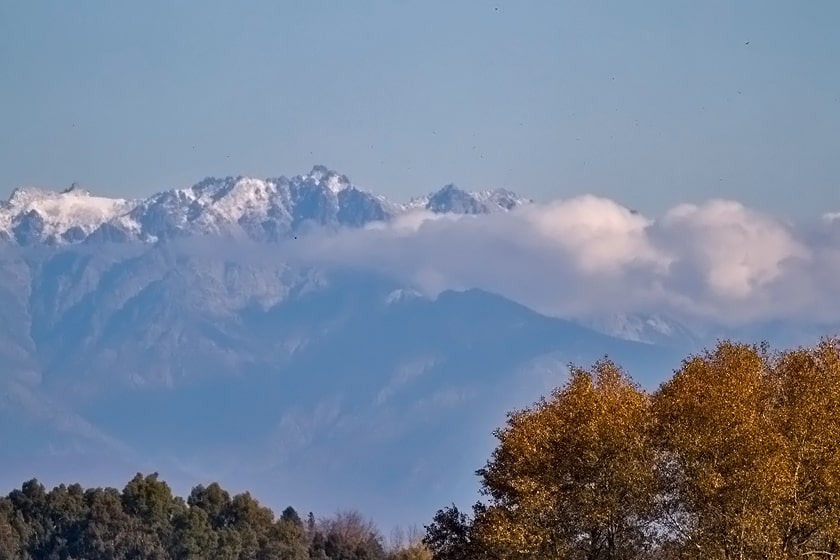
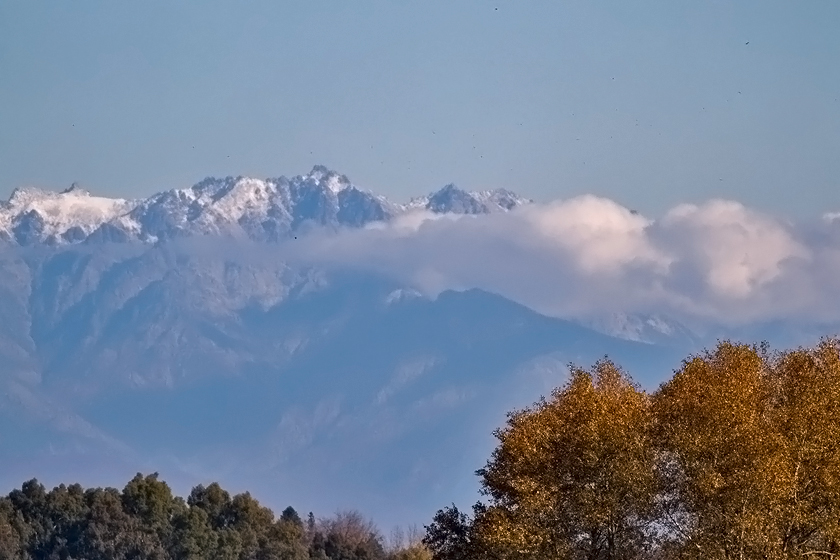














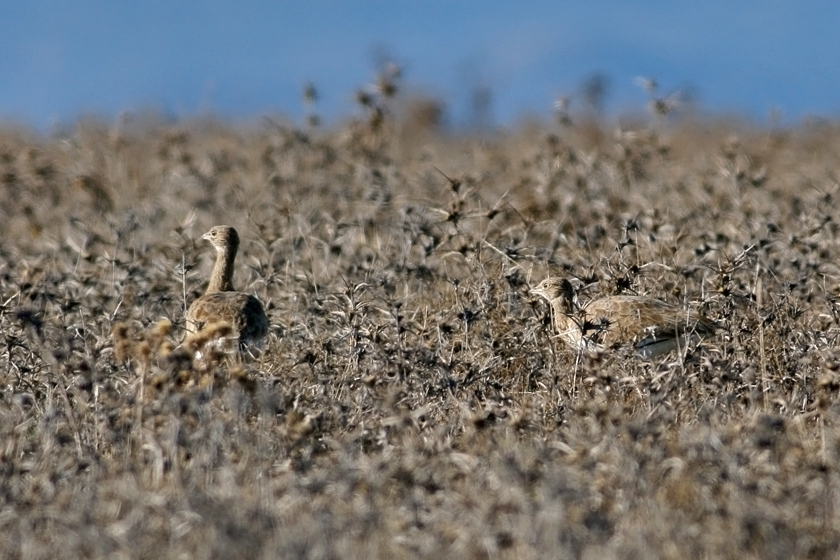

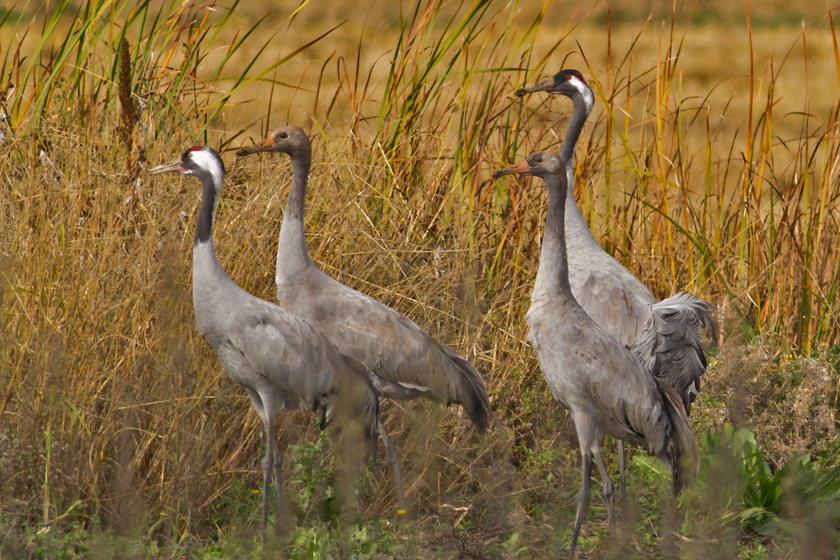
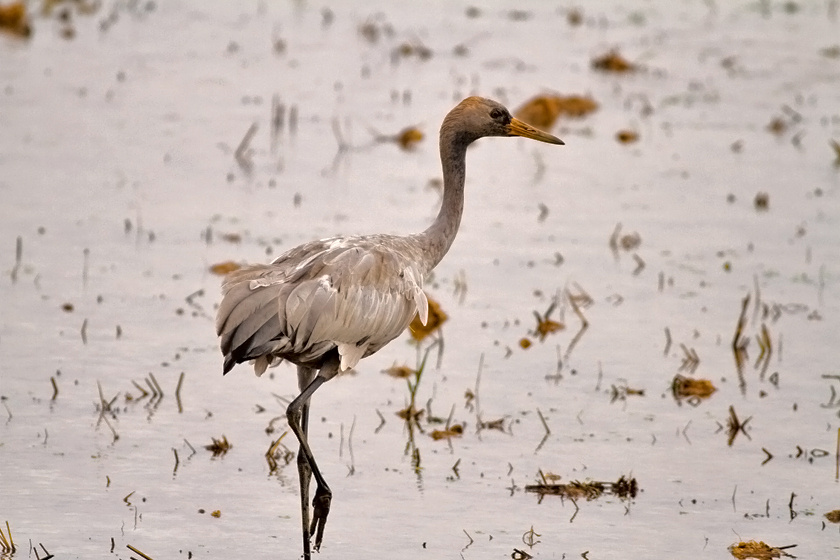
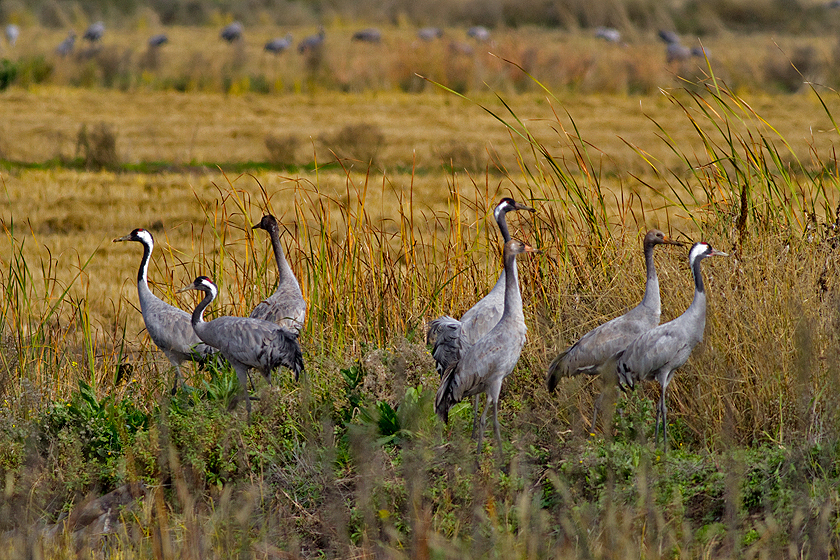


































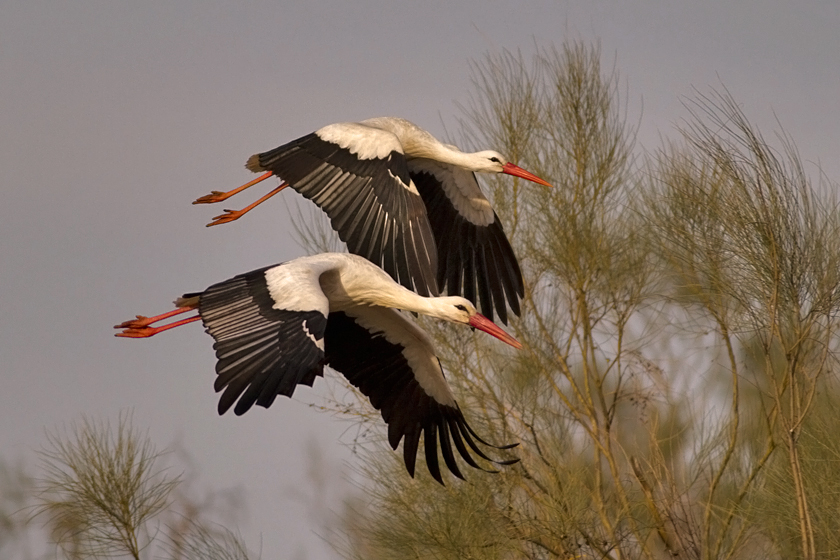





Leave a Reply